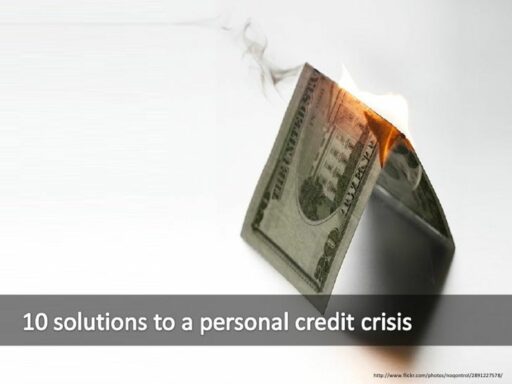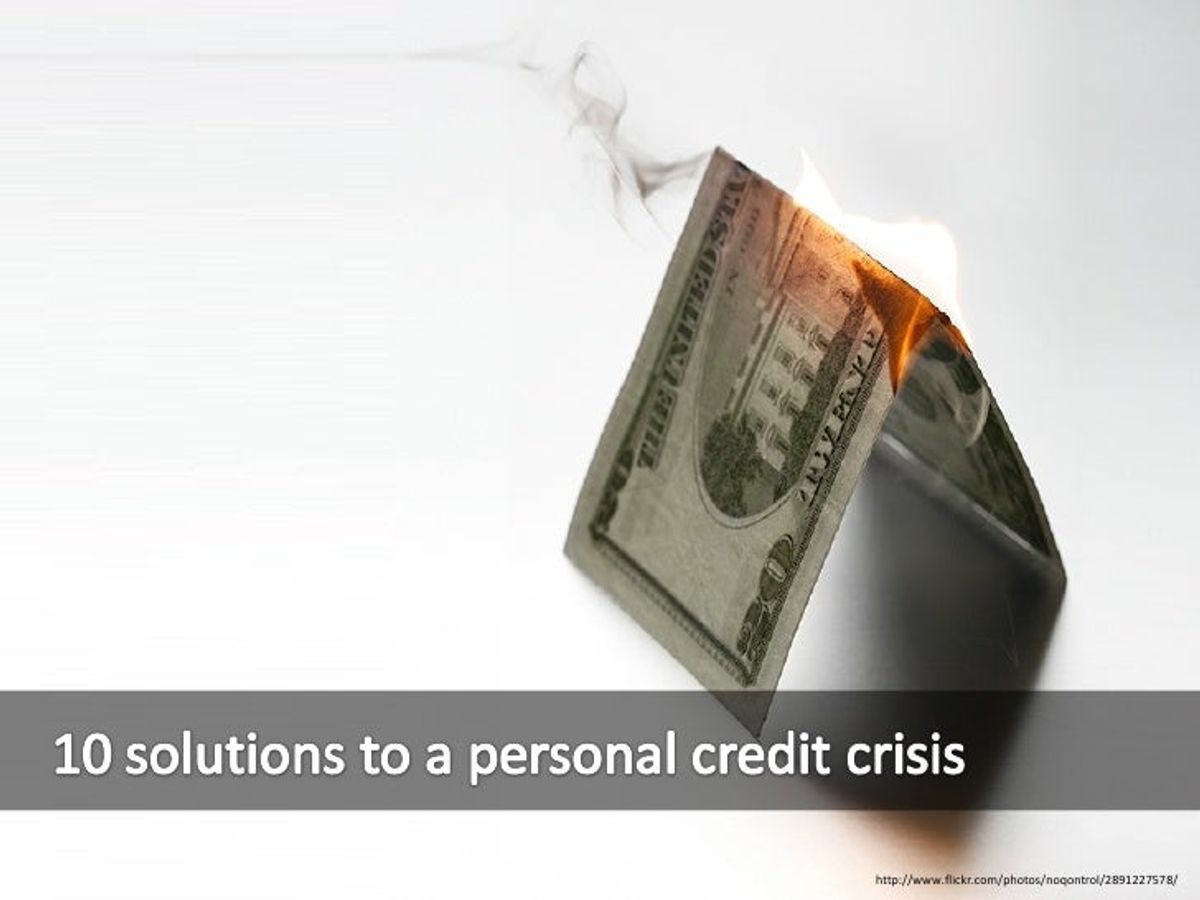Credit cards are often touted for their convenience and rewards, but they come with a darker side that can easily be overlooked. While they can help build credit and offer enticing rewards, the negative implications of financing purchases with credit cards are manifold and can lead to long-term financial strain. This article delves into the hidden costs and psychological effects of credit card use, the deceptive allure of rewards, the impact on credit scores, and strategies for responsible usage.
Key Takeaways
- Credit card interest rates and fees can quickly turn convenient purchases into costly debts, emphasizing the importance of understanding the true price of borrowing.
- The psychological effects of using credit cards, such as mental accounting and emotional disconnect, can lead to increased spending and a distorted perception of value.
- Rewards programs can be a double-edged sword, enticing users to spend more while posing the risk of unredeemed benefits and encouraging poor financial habits.
- Credit card debt can have significant long-term effects on one’s credit score, with the potential to hinder financial opportunities and increase the cost of borrowing.
- Adopting smart credit card strategies, such as diligent budgeting, maximizing rewards without overspending, and regular monitoring, is crucial for maintaining financial health.
The Hidden Costs of Credit: Understanding the Financial Pitfalls


Interest Rates and Fees: The Price of Borrowing
When you use a credit card to finance purchases, you’re not just paying for the item; you’re also committing to the potential costs associated with borrowing. Credit cards are essentially short-term loans, and the price tag for this convenience can be steep, with interest rates often exceeding 20%. It’s crucial to understand the terms of your credit agreement to avoid unpleasant surprises on your statement.
Credit card companies entice consumers with introductory rates that are deceptively low, usually lasting between 12 to 18 months. After this period, a higher standard rate takes over, which can significantly increase the cost of any carried balance.
Here’s a quick breakdown of key terms you should be familiar with:
- Introductory Rates: A temporary low rate to lure you in before the standard rate applies.
- APR (Annual Percentage Rate): The yearly interest rate, which is the true cost of borrowing. Divide this by 12 to get your monthly rate.
- Variable Rates: Rates that change with market conditions, unlike fixed rates.
Action item: Review your credit card statements to identify your rates and any additional fees, such as late fees or annual charges. This will help you gauge the true cost of using credit for your purchases.
Credit Utilization and Its Impact on Your Financial Health
Understanding your credit utilization ratio is crucial for maintaining a healthy financial profile. This ratio represents the amount of credit you’re actively using compared to your total available credit. For instance, if you have a combined credit limit of $15,000 across all cards and a total balance of $3,000, your utilization rate is 20 percent.
Keeping your credit utilization ratio below 30% is a widely accepted practice. This applies both per card and across all your credit lines. Exceeding this threshold can signal to lenders that you’re over-reliant on credit, potentially leading to higher interest rates or declined applications.
It’s important to remember that utilization across all credit lines matters. Even if one card has a low balance, maxing out another can negatively affect your score. Here’s a simple breakdown of how different utilization rates can impact your credit score:
- Below 20%: Generally considered excellent, showing responsible credit use.
- 20% to 30%: Acceptable, but approaching cautionary levels.
- Above 30%: May start to negatively influence your credit score.
Action items to consider include calculating your credit card utilization to identify if adjustments are needed and checking if you’re fully utilizing the rewards offered by your cards. Remember, a higher credit utilization ratio can decrease your credit score, especially if maintained over an extended period.
The Psychological Trap of Minimum Payments
The allure of minimum payments on credit cards often masks the true cost of purchases. By paying only the minimum, consumers extend the repayment period and accumulate significant interest charges. This can lead to a deceptive sense of affordability and a cycle of persistent debt.
- Minimum payments contribute to a longer debt lifespan.
- Interest compounds, increasing the total amount owed.
- The small payment size encourages additional spending.
The minimum payment option, while seemingly convenient, can entrap consumers in a web of compounding debt, making it harder to achieve financial freedom.
Understanding the implications of minimum payments is crucial for maintaining financial health. It’s not just about meeting monthly obligations; it’s about recognizing the long-term cost of credit and adjusting spending habits accordingly.
The Psychology Behind Spending: Credit Cards vs. Cash


Mental Accounting and the Ease of Swiping
The concept of Mental Accounting is a cornerstone in understanding consumer behavior, particularly in the realm of credit card use. It refers to the different values people assign to money based on subjective criteria, such as the source of the money or its intended use. This mental separation of funds can lead to irrational spending behaviors, as the pain of parting with hard-earned cash is not felt when simply swiping a card.
The ease of swiping a credit card can often mask the true cost of a purchase. When consumers do not physically see the money leaving their hands, they are less likely to feel the impact of the expense. This psychological distance from the transaction can result in increased spending, as the immediate gratification outweighs the delayed pain of payment.
The ease of just swiping a card and the promise of future payments create a cognitive disconnect from the reality of one’s financial situation. It’s like playing a game where the score is tallied later, and the immediate fun overshadows the eventual reckoning.
To illustrate the effects of mental accounting, consider the following points:
- Consumers often categorize funds into ‘mental accounts’ such as daily expenses, savings, or luxury purchases.
- Credit cards blur these categories, leading to overspending in areas that would typically be more controlled with cash.
- The act of swiping a card is a frictionless experience, removing the psychological barriers that come with handing over cash.
The Emotional Disconnect When Using Plastic
The act of swiping a credit card can often feel less ‘real’ than handing over cash. This emotional disconnect can lead to more liberal spending habits, as the immediate financial impact is not felt. Unlike cash transactions, where the physical exchange of money can trigger a psychological pain of paying, credit cards delay this sensation, allowing for a smoother, but potentially more dangerous, spending experience.
The ease of credit card use blurs the lines between spending and affordability, often resulting in a disconnection from the true cost of purchases.
Understanding this emotional response is crucial for consumers aiming to maintain financial health. Recognizing the lack of discomfort that comes with credit card use compared to cash is the first step in regaining control over one’s spending habits.
How Credit Cards Alter Our Perception of Value
Credit cards have a profound effect on our perception of spending and value. The convenience of credit can lead to a disconnection from the actual cost of purchases, making it easier to spend more than we might with cash. This detachment is not just psychological; it’s reflected in our spending habits.
- The ‘out of sight, out of mind’ mentality can prevail when using credit cards, as the pain of parting with physical cash is absent.
- Rewards and points systems create a game-like scenario, where the focus shifts from the cost to the potential benefits.
- The ease of swiping or tapping a card can diminish the gravity of a transaction, making it feel less ‘real’ than handing over cash.
The subtle shifts in our spending behavior when using credit cards can have long-term financial implications. It’s crucial to remain vigilant and mindful of the true cost behind the swipe.
Rewards and Incentives: A Double-Edged Sword


The Lure of Points and Miles: When More Becomes Less
Credit card rewards, such as points and miles, often entice consumers with the promise of ‘free’ travel or cashback. However, the pursuit of these rewards can lead to a cycle of spending that outweighs the benefits. The allure of earning rewards can mask the true cost of purchases, leading to a situation where more spending actually becomes less rewarding.
- Budget-Conscious Spending: Don’t fall into the overspending trap. Only use your card for what you can afford.
- Rewarding Rewards: Unlock the full potential of your card’s rewards! Don’t let valuable points expire due to misuse.
- Utilization Matters: Remember, your total credit utilization impacts your credit score.
Action item: Calculate your credit card utilization. Surprised? Time to adjust your spending habits!
Falling for the rewards trap is easy, but the consequences can be significant. It’s essential to balance the desire for rewards with the reality of financial responsibility. By keeping track of rewards and understanding their impact on spending, consumers can avoid the pitfalls of rewards programs.
Expiration and Forfeiture of Rewards: Hidden Losses
Credit card rewards can be a tantalizing offer, but they often come with a catch that many cardholders overlook: expiration dates and forfeiture clauses. Rewards not redeemed in time can become a silent drain on potential savings, turning what seems like a benefit into a missed financial opportunity.
- Expiration Dates: Many rewards programs have expiration dates, after which points or miles become void.
- Forfeiture Clauses: Failing to meet certain conditions, such as a minimum spend or account inactivity, can lead to the loss of accumulated rewards.
It’s essential to understand the terms and conditions of your credit card’s rewards program to avoid losing out on the benefits you’ve earned.
To illustrate the potential losses, consider the following table showing the percentage of rewards typically forfeited due to expiration or non-compliance with program terms:
| Reward Type | Average Forfeiture Rate |
|---|---|
| Points | 20% |
| Miles | 25% |
| Cash Back | 15% |
By staying vigilant and keeping track of reward expiration dates and program requirements, cardholders can minimize these hidden losses and make the most of their credit card perks.
Balancing the Benefits with Responsible Use
Credit cards offer a plethora of rewards that can be enticing, but it’s crucial to use them in a way that aligns with your financial goals. Budget-conscious spending is key; it’s important to resist the temptation to overspend and to use your card within your means. Planned purchases should always fit within your budget to avoid the accumulation of debt.
Utilization matters significantly in the realm of credit. It’s not just about how much you owe on one card, but rather your total credit utilization across all cards. Keeping this number low is essential for maintaining a healthy credit score. Here’s a simple action item to keep you on track:
- Action item: Calculate your credit card utilization. Surprised? Time to adjust your spending habits!
Finally, while rewards like travel points and cashback are attractive, they must be managed wisely. Letting rewards expire is akin to leaving money on the table. Make sure to check your card’s rewards and use them before they’re forfeited.
The page emphasizes the importance of reducing interest rates on debts, continuous investment in your financial literacy, and the critical distinction between needs and wants in personal finance.
Credit Score Implications: The Long-Term Consequences


How Credit Card Debt Affects Your Credit History
Credit card debt can have a profound impact on your credit history, which is a critical factor in your financial life. Your credit history reflects your reliability as a borrower and influences the terms and interest rates you’ll receive on future loans. When you carry high balances or miss payments, it can lead to negative marks that linger on your credit report.
- Opening a new credit card can lower the average age of your accounts, potentially reducing your credit score.
- Consistently paying down debt and using credit responsibly can help mitigate short-term impacts on your score.
Credit utilization, which is the ratio of your credit card balances to your credit limits, plays a significant role in your credit score. Keeping this ratio low is advisable to maintain a healthy credit score.
It’s also important to understand how different credit card issuers report to consumer credit bureaus. Not all activity is reported equally, and in some cases, only negative information is shared. This can affect how your credit card use is reflected in your credit history.
The Risks of Juggling Multiple Credit Cards
Managing multiple credit cards can be a balancing act that, if not handled properly, may lead to financial strain. Credit limits can start at $120, increase with credit history, and be affected by usage. Issuers may reduce limits for various reasons, impacting credit scores. It’s crucial to understand that utilization across all credit lines matters. Even if you keep one card’s balance low, maxing out another can still drag your score down.
Spread your spending wisely and keep that overall utilization rate below 20% to maintain a healthy credit profile.
Here are some key points to consider when handling multiple credit cards:
- Budget-Conscious Spending: Only use your card for what you can afford. Planned purchases should fit within your budget.
- Rewarding Rewards: Maximize the benefits of your card’s rewards without letting points expire due to misuse.
- Utilization Matters: Keep your credit utilization ratio below 30% on both a per-card basis and across all your cards to avoid negative impacts on your credit score.
Understanding the Weight of Business Credit on Personal Finances
When small business owners consider opening a business credit card, they often ponder the question: How does a business credit card affect my personal credit score? The reality is that the line between personal and business credit is not as clear-cut as one might hope. Business cards can have an effect on both personal and business credit scores, though not always. If an issuer reports your business credit card activity to consumer credit reporting agencies, it will impact your personal credit in several ways.
The intersection of personal and business credit is a curious one, particularly for small business owners. It’s crucial to understand where your business card activity will be reported and the potential influence on your personal finances.
Most business card providers require a personal guarantee, which means your personal credit score is directly linked to your business dealings. Here’s a quick breakdown of how business credit can affect your personal credit score:
- New credit inquiries may appear on your personal credit report when you apply for a business credit card.
- Utilization rate and payment history from your business card can factor into your personal credit score.
- Personal guarantees mean that you are personally responsible for the debt, affecting your personal credit if the business cannot pay.
Understanding these implications is essential for maintaining a healthy financial profile, both personally and in business.
Strategies for Smart Credit Card Use


Budgeting for Credit: Avoiding the Debt Spiral
To avoid the debt spiral, it’s crucial to approach credit card use with a budget-conscious mindset. Only charge what you can afford and ensure that your purchases align with your budget. This discipline helps prevent the accumulation of debt that can quickly become unmanageable.
Managing debt involves distinguishing between good debt, such as investments, and bad debt, like consumables. It’s essential to prioritize repayment and create a structured plan. Here are some steps to consider:
- Assess your current financial situation.
- Identify necessary expenses versus luxury items.
- Allocate funds to pay off credit card balances, starting with the highest interest rates.
- Monitor your credit utilization to keep it within a healthy range.
Every dollar saved on interest is a dollar that can be used to reduce debt, benefiting your credit score and financial health.
Remember, your credit utilization across all cards impacts your financial standing. It’s not just about managing one card but your entire credit portfolio. Seek guidance if you’re unsure how to proceed, as effective debt management is key to maintaining financial stability.
Maximizing Rewards Without Compromising Finances
To truly benefit from credit card rewards without undermining your financial stability, it’s essential to approach them with a strategic mindset. Budget-conscious spending is the cornerstone of this strategy. It’s crucial to use your card within the limits of what you can afford, ensuring that your purchases are planned and within your budget. This discipline helps prevent the common pitfall of overspending just to earn rewards.
When it comes to rewards, not all credit cards are created equal. Some offer cash back, others travel points or airline miles. To maximize your earnings, start by identifying your primary spending categories and choose a card that offers the best rewards for those expenses. Here’s a simple action plan:
- Identify your main spending categories: Groceries, gas, dining out?
- Select a card that rewards those categories: Look for high cash back percentages or travel points.
- Understand the rewards program: Know the expiration dates and redemption options.
Utilization also plays a significant role in your financial health. It’s not just about managing one card, but your total credit utilization across all cards. Keeping this in check is vital for maintaining a good credit score.
Remember, the goal is to use credit cards as tools for financial leverage, not as a means to accumulate debt. By following these steps and regularly monitoring your rewards and spending, you can enjoy the benefits of credit cards without the financial strain.
Regular Monitoring: The Key to Credit Discipline
Regular monitoring of your credit card activity is essential for maintaining financial discipline. By keeping a close eye on your spending and payments, you can ensure that you stay within your budget and avoid costly mistakes. It’s not just about checking your balance; it’s about understanding your financial habits and making adjustments where necessary.
Action items are crucial for staying on top of your credit card use. They can range from reviewing your credit card statements to setting up alerts for high spending or due payments.
Here are some action items to consider:
- Calculate your credit card utilization to gauge if you’re overextending yourself.
- Check your rewards to ensure you’re maximizing the benefits without letting points expire.
- Pull your free credit report regularly to monitor your credit score and identify areas for improvement.
Remember, your credit score and responsible choices are pivotal in securing favorable credit terms. Tools and services like StellarFi can assist you in navigating your financial journey and enhancing your credit score, ultimately leading to financial freedom.
Conclusion
In conclusion, while credit cards offer a convenient and often rewarding way to finance purchases, they are not without their pitfalls. The allure of credit card rewards and the ease of cashless transactions can lead to overspending and a false sense of financial security. Mental accounting can mask the true impact of our spending habits, and the temptation to utilize credit card floats can result in skewed financial perspectives and potential debt accumulation. It is crucial for consumers to exercise discipline, maintain a clear budget, and fully understand the terms and implications of credit usage. By doing so, credit cards can be a valuable financial tool rather than a debt trap. Remember, responsible credit card use is key to leveraging their benefits while avoiding the negative implications that can arise from misuse.
Frequently Asked Questions
What are the hidden costs associated with using credit cards?
The hidden costs of using credit cards include high interest rates, various fees (such as annual fees, late payment fees, and cash advance fees), and the potential for increased debt due to the ease of overspending.
How does credit utilization affect my financial health?
Credit utilization is the percentage of your credit limit that you’re using. High utilization can negatively impact your credit score, signaling to lenders that you may be a higher-risk borrower, which can lead to higher interest rates on loans and credit cards.
Is it true that credit cards can change my perception of spending?
Yes, credit cards can alter your perception of spending through mental accounting, making it feel less ‘painful’ to spend compared to using cash. This can lead to overspending as the emotional disconnect from the actual cost is greater.
Are credit card rewards always beneficial?
While credit card rewards can offer benefits like cashback, points, and miles, they can also encourage overspending to earn these rewards. Additionally, rewards can expire or be forfeited if not used, leading to potential losses.
How does credit card debt affect my credit score?
Carrying high credit card debt can lower your credit score, as it indicates to credit bureaus that you may be overextended financially. Paying off debt, keeping low balances, and making payments on time can help improve your credit score.
What strategies can I use to manage my credit card effectively?
To manage your credit card effectively, create a budget that includes credit spending, aim to pay off balances in full each month, maximize rewards without overspending, regularly monitor your account, and keep your credit utilization low.





